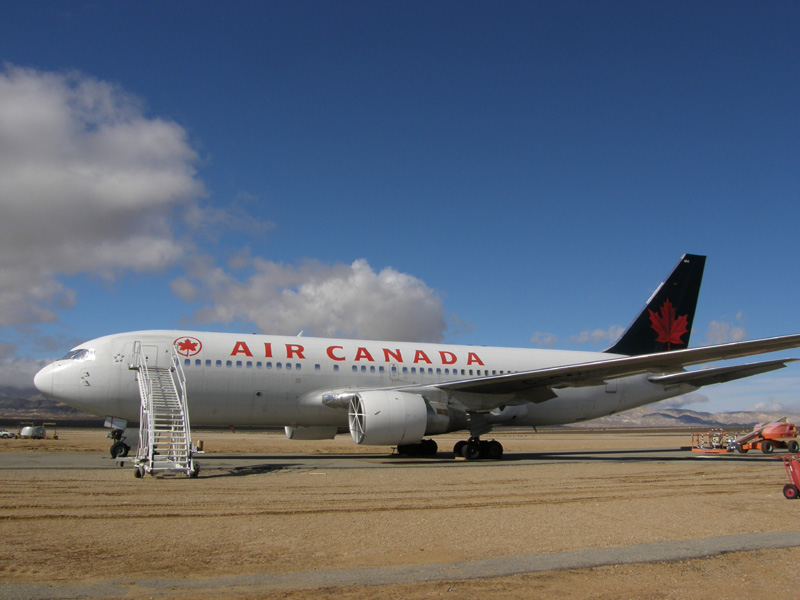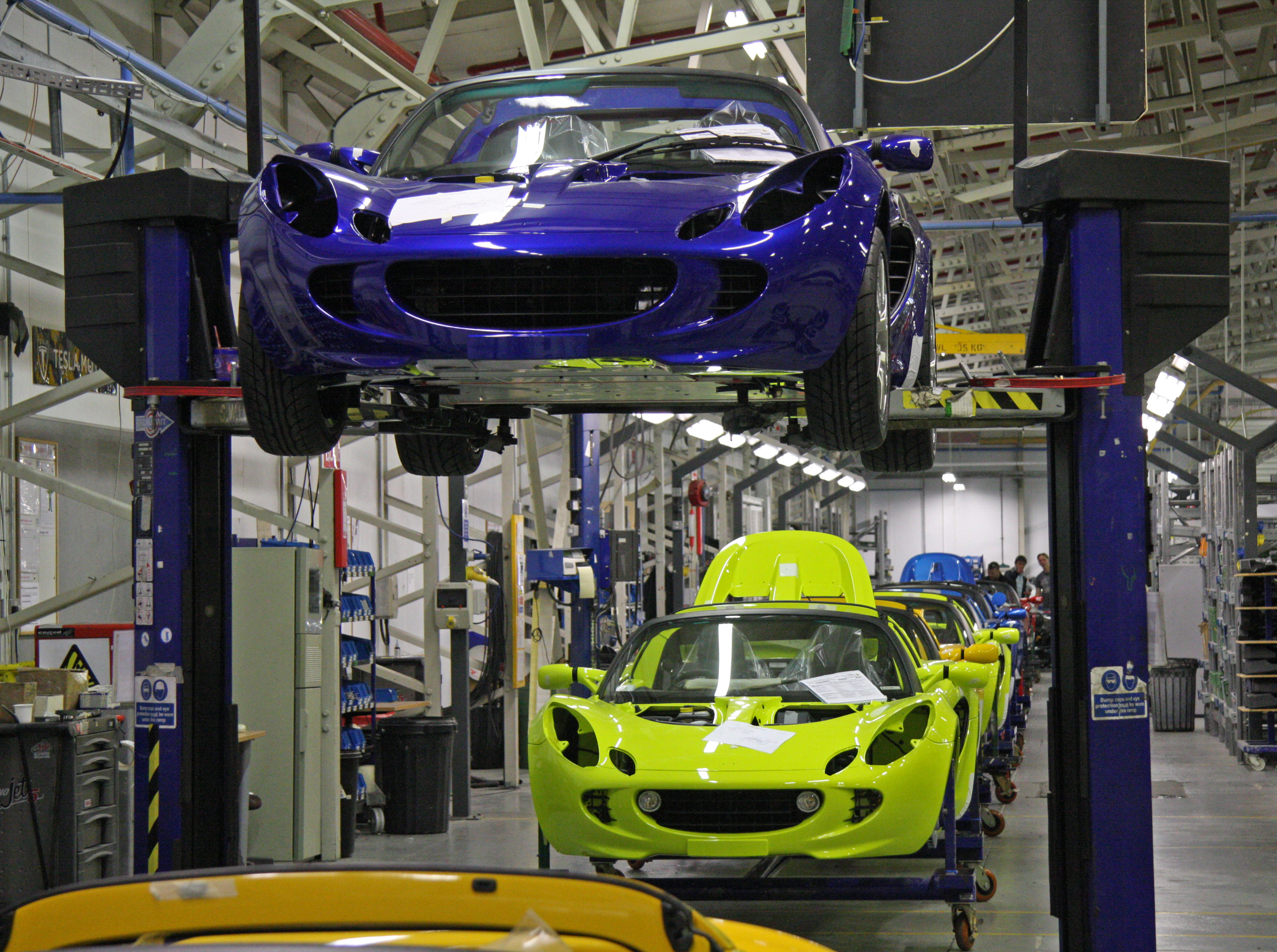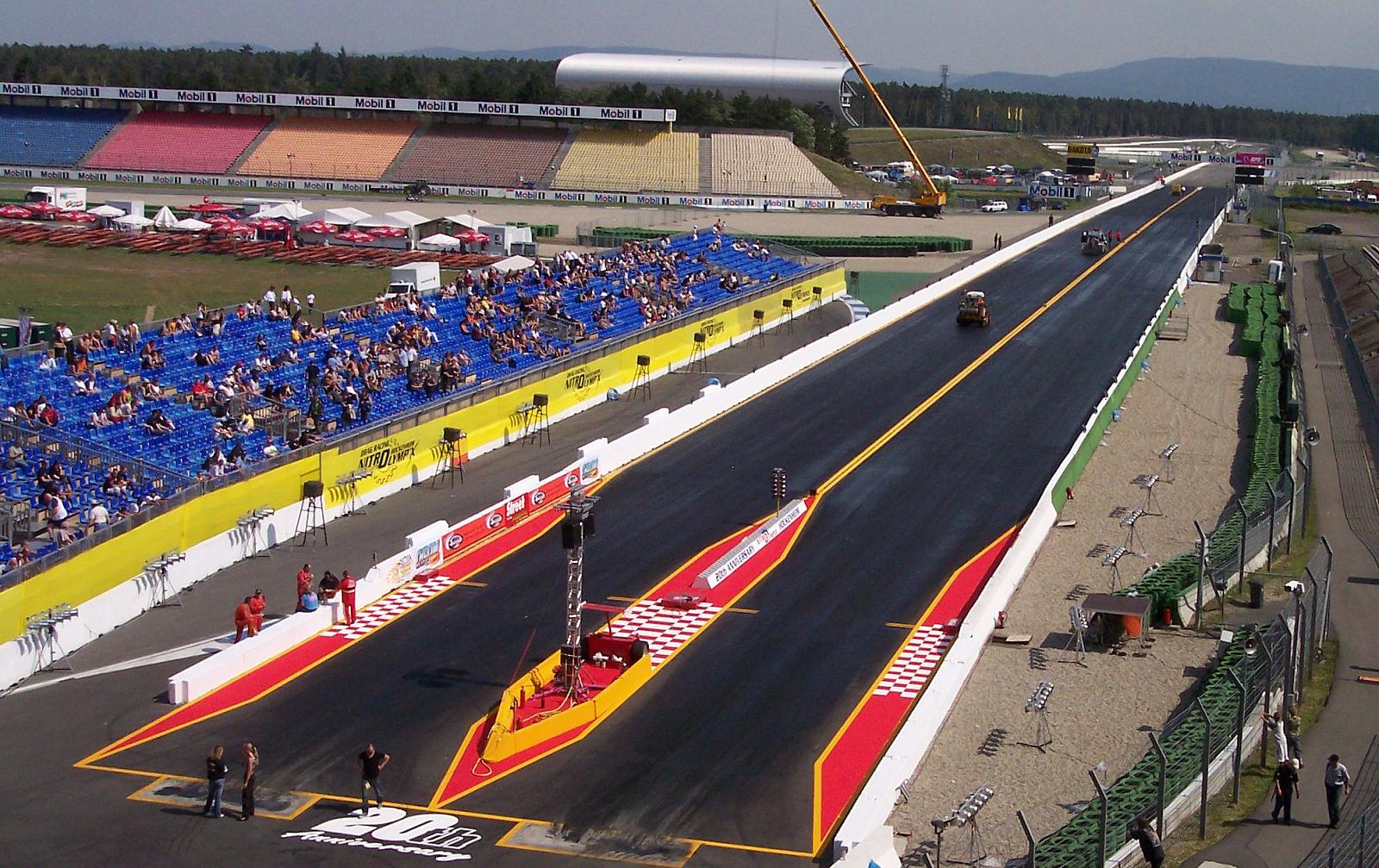|
Gimli Motorsports Park
Gimli Motorsports Park is a multi-track motorsports facility located in Gimli, Manitoba, Canada. The 95-hectare facility features a 1/4-mile dragstrip, a 1.3-mile road racing course, a one-kilometre karting track and a two-kilometre motocross track. The park hosts events for motorsports groups including the Winnipeg Sports Car Club, Drag Racing Association of Manitoba, Manitoba Roadracing Association (Superbikes), and the Manitoba Karting Association. History On August 6, 1972 the Winnipeg Sports Car Club organized the first road racing event on one of the original decommissioned parallel runways of RCAF Station Gimli which had closed the previous year in September 1971. Racing switched to the current dedicated course in 1973. Gimli Industrial Park Airport continues to operate on the second runway of the World War II airfield. Gimli Motorsport Park was the site of the infamous Gimli Glider incident in 1983, an aviation accident in which Air Canada Flight 143, a Boeing 767, ra ... [...More Info...] [...Related Items...] OR: [Wikipedia] [Google] [Baidu] |
Gimli, Manitoba
Gimli is an unincorporated community in the Rural Municipality of Gimli on the west side of Lake Winnipeg in Manitoba, Canada. The community's first European settlers were Icelanders who were part of the New Iceland settlement in Manitoba. The community maintains a strong connection to Iceland and Icelandic culture today, including the annual Icelandic Festival. It was incorporated as a village on March 6, 1908, and held List of towns in Manitoba, town status between December 31, 1946, and January 1, 2003, when it amalgamated with the RM of Gimli. Census Canada now recognizes the community as a Census geographic units of Canada#Population centres, population centre for census purposes. The 2021 Canadian census recorded a population of 2,345 in the population centre of Gimli. The town's settlers sustained themselves primarily from agriculture and fishing. Gimli maintains a strong connection to the lake today, tourism has played a part in the town's current economic sustainability. Gi ... [...More Info...] [...Related Items...] OR: [Wikipedia] [Google] [Baidu] |
Gimli Glider
Air Canada Flight 143, commonly known as the Gimli Glider, was a Canadian scheduled domestic passenger flight between Montreal and Edmonton that ran out of fuel on Saturday, July 23, 1983, at an altitude of , midway through the flight. The flight crew successfully glided the Boeing 767 to an emergency landing that resulted in no serious injuries to passengers or persons on the ground, at a former Royal Canadian Air Force base in Gimli, Manitoba, that had been converted to a racetrack, Gimli Motorsports Park. This unusual aviation incident earned the aircraft the nickname "Gimli Glider". The accident is commonly blamed on mistaking pounds for kilograms, which resulted in the aircraft carrying only 45% of its required fuel load. However, the units error was the last in a series of failures that aligned in a Swiss cheese model to cause the accident. The Boeing 767 had a fuel-quantity indication system (FQIS) with two redundant channels, but a design flaw caused it to ... [...More Info...] [...Related Items...] OR: [Wikipedia] [Google] [Baidu] |
Tom Klausler
Tom Klausler (born July 14, 1945, St. Paul, Minnesota), is a retired American race car driver. He competed in the CART Championship Car series and in SCCA's Can-Am series. Racing career Klausler started racing in a Corvair in 1968. After racing in the car for 4 years, he moved into a Formula Ford single-seater.Tom Klausler's biography Historic Racing.com, Retrieved June 11, 2008 He moved into a racecar in 1973. He won the Formula Atlantic race that year at |
Brabham
Brabham () is the common name for Motor Racing Developments Ltd., a British racing car manufacturer and Formula One racing team. Founded in 1960 by Australian driver Jack Brabham and British-Australian designer Ron Tauranac, the team won four Drivers' and two Constructors' World Championships in its 30-year Formula One history. Jack Brabham's 1966 FIA Drivers' Championship remains the only such achievement using a car bearing the driver's own name. In the 1960s, Brabham was the world's largest manufacturer of open-wheel racing cars for sale to customer teams; by 1970 it had built more than 500 cars. During this period, teams using Brabham cars won championships in Formula Two and Formula Three. Brabham cars also competed in the Indianapolis 500 and in Formula 5000 racing. In the 1970s and 1980s, Brabham introduced such innovations as in-race refuelling, carbon brakes, and hydropneumatic suspension. Its unique Gordon Murray-designed " fan car" won its only race before being ... [...More Info...] [...Related Items...] OR: [Wikipedia] [Google] [Baidu] |
Lotus Cars
Lotus Cars Limited is a British automotive company headquartered in Norfolk, England which manufactures sports cars and racing cars noted for their light weight and fine handling characteristics. Lotus was previously involved in Formula One racing, via Team Lotus, winning the Formula One World Championship seven times. Lotus Cars was founded and owned for many years by Colin Chapman. After his death and a period of financial instability, it was bought by General Motors, then Romano Artioli and DRB-HICOM through its subsidiary Proton. It is currently majority owned by Chinese multinational Geely, with Etika Automotive as a minority shareholder. The engineering consultancy firm Lotus Engineering, an offshoot of Lotus Cars, has facilities in the United Kingdom, United States, China, and Malaysia. Notable Lotus cars include the Lotus Seven, the Lotus Esprit and the Lotus Elan. History Early years The company was formed in 1952 as Lotus Engineering Ltd. by engineers Colin Ch ... [...More Info...] [...Related Items...] OR: [Wikipedia] [Google] [Baidu] |
Richard Craig Hill
Richard Craig Hill (born January 19, 1934) was a Canadian professional automobile racer. Hill died at his home in West Lorne, Ontario on November 1, 2012. Racing career In a driving career that spanned almost 40 years, Craig Hill raced and won in almost every type of racing car, from midgets and super-modified stock cars to sports cars and sophisticated open-wheel formula cars. He was Canadian Formula B champion in 1969 and 1970, driving a Formula Ford he modified to formula B spec. He co-drove with Ludwig Heimrath to win the Sundown Grand Prix in 1973 and 1974. He was inducted into the Canadian Motorsport Hall of Fame in 1996. Other Motorsports Involvement As advertising and promotions manager of Castrol Canada, he was involved in that company's investment in Canadian motorsport. See also *Formula Atlantic Formula Atlantic is a specification of open-wheel racing car developed in the 1970s. It was used in professional racing through the IMSA Atlantic Championship until 2 ... [...More Info...] [...Related Items...] OR: [Wikipedia] [Google] [Baidu] |
Gilles Villeneuve
Joseph Gilles Henri Villeneuve () (January 18, 1950 – May 8, 1982) was a Canadian racing driver, who spent six years in Grand Prix motor racing with Ferrari, winning six races and widespread acclaim for his performances. An enthusiast of cars and fast driving from an early age, Villeneuve started his professional career in snowmobile racing in his native province of Quebec. He moved into single seaters, winning the US and Canadian Formula Atlantic championships in 1976, before being offered a drive in Formula One with the McLaren team at the 1977 British Grand Prix. He was taken on by reigning world champions Ferrari for the end of the season and drove for the Italian team from 1978 until his death in 1982. He won six Grand Prix races in a short career at the highest level. In 1979, he finished second by four points in the championship to teammate Jody Scheckter. Villeneuve died in a crash caused by a collision with the March car driven by Jochen Mass during qualifying ... [...More Info...] [...Related Items...] OR: [Wikipedia] [Google] [Baidu] |
Formula B
Formula Atlantic is a specification of open-wheel racing car developed in the 1970s. It was used in professional racing through the International Motor Sports Association, IMSA Atlantic Championship until 2009 and is currently primarily used in amateur racing through Sports Car Club of America Formula Atlantic. History The history of Formula Atlantic begins with the Sports Car Club of America, SCCA Formula B class, created in 1965 for single-seat formula cars with engines not exceeding 1600cc in capacity. Prior to Formula Atlantic, professional Formula B races were held in the United States from 1965 to 1972, firstly with the SCCA's poorly supported Formula A, then as part of the SCCA Grand Prix Championship in 1967 SCCA Grand Prix Championship, 1967 and 1968 SCCA Grand Prix Championship, 1968 and then in their own independent series from 1969 to 1972. Formula Atlantic as a class evolved in the United Kingdom in 1971 from the US Formula B rules, with 1600cc production-based twin- ... [...More Info...] [...Related Items...] OR: [Wikipedia] [Google] [Baidu] |
Canadian Automobile Sport Clubs
Canadian Automobile Sport Clubs (CASC) was the national governing body for auto racing in Canada from 1958 to 1988. Its origins stretched back to 1951, when three independent car clubs met in Kingston, Ontario to found the Canadian Auto Sport Committee. In 1951, inventor, engineer and MG race driver Marshall Smith Green came from Montreal to meet in Kingston with designer Jack Luck. Green asked Luck to design the Club's logo. The name was changed to the Canadian Automobile Sport Clubs in 1958, when Regions across the country were developed. To get permits for International Races, CASC was affiliated with the Royal Automobile Club (RAC plc) of Great Britain until 1967, when it was recognized as a full member by the FIA as Canada's governing body of auto racing. The nation's motoring interests, meanwhile were represented to the FIA by the CASC's roadgoing counterpart, the CAA. During its lifetime, CASC developed strong national series', such as the Canada Class; the original Hon ... [...More Info...] [...Related Items...] OR: [Wikipedia] [Google] [Baidu] |
Drag Racing
Drag racing is a type of motor racing in which automobiles or motorcycles compete, usually two at a time, to be first to cross a set finish line. The race follows a short, straight course from a standing start over a measured distance, most commonly , with a shorter, distance becoming increasingly popular, as it has become the standard for Top Fuel dragsters and Funny Cars, where some major bracket races and other sanctioning bodies have adopted it as the standard. The is also popular in some circles. Electronic timing and speed sensing systems have been used to record race results since the 1960s. The history of automobiles and motorcycles being used for drag racing is nearly as long as the history of motorized vehicles themselves, and has taken the form of both illegal street racing and as a regulated motorsport. History Drag racing started in the 1940s. World War II veterans were prominently involved, and some early drag races were done at decommissioned aircraft b ... [...More Info...] [...Related Items...] OR: [Wikipedia] [Google] [Baidu] |
Dragstrip
A dragstrip is a facility for conducting automobile and motorcycle acceleration events such as drag racing. Although a quarter mile (1320 feet, 402 m) is the best known measure for a drag track, many tracks are eighth mile (201 m) tracks, and the premiere classes will run 1,000 foot (304.8 m) races. The race is begun from a standing start which allows three factors to affect the outcome of the race: reaction time, power/weight ratio, and traction. Features A dragstrip is a straight, purpose-built racetrack, typically an eighth, ten feet longer than three-sixteenths, or a quarter of a mile long (660/1,000/1320 feet, 201/304.8/402 m), with an additional ''shutdown area'' to allow vehicles room to stop after crossing the finish line. Common features also include a 'water box' where vehicles and motorcycles start their burnouts for tire clean-up and also to heat up their tires to improve traction. There is a set of lights known as a 'Christmas ... [...More Info...] [...Related Items...] OR: [Wikipedia] [Google] [Baidu] |
International Hot Rod Association
The International Hot Rod Association (IHRA) is the second-largest drag racing sanctioning body after the National Hot Rod Association (NHRA). The Carrier Era 1971-1987 The IHRA was formed in November 1970 by businessman Larry Carrier. Throughout this period the organization was operated primarily in the south-eastern United States from its headquarters in Bristol, Tennessee. The IHRA initially followed the NHRA's professional class structure of Top Fuel, Funny Car and Pro Stock until the 1984 season when it decided to drop the premier Top Fuel category, an arrangement that only lasted three years before the class was reinstated for the 1987 season. Carrier is also credited with initiating drag racing's long-term sponsorship association with the R.J. Reynolds Tobacco Company's Winston (cigarette), Winston brand, which has ended. 1988-98 IHRA headquarters briefly moved to Waco, Texas in 1988 after it was purchased by Texan racer and track operator Billy Meyer who made many chan ... [...More Info...] [...Related Items...] OR: [Wikipedia] [Google] [Baidu] |





